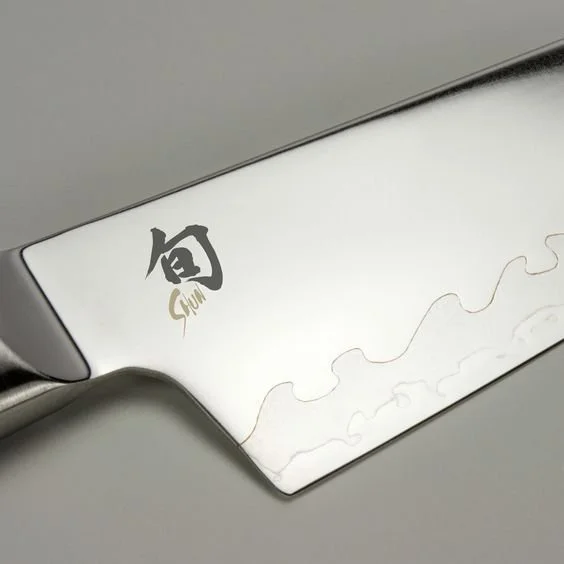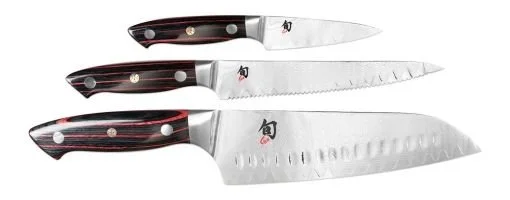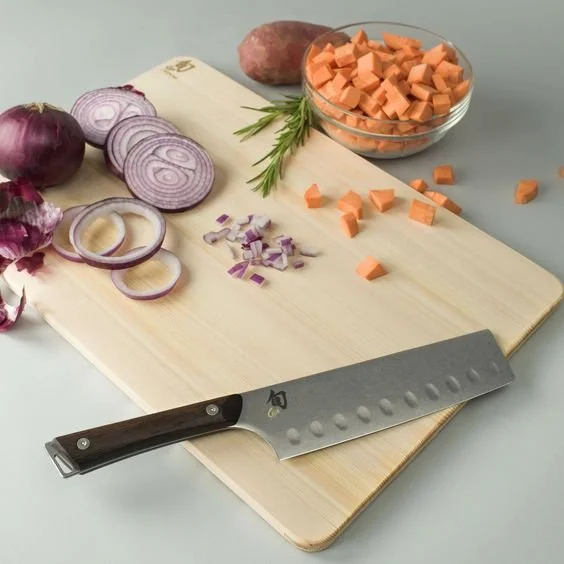A Guide to Japanese Chef’s Knives
Japanese kitchen knives have a stellar reputation for being the best in the business, and for good reason. Thanks to their exceptional craftsmanship, top-quality materials, and beautifully detailed designs, a Japanese chef’s knife will last a lifetime. Here’s why Japanese chef’s knives are worth the investment, and what you should know before you purchase.
Photo via Shun Cutlery
Japanese kitchen knives have thin blades made with harder steel than typical Western knives, with a smaller sharpening angle that allows extremely precise cuts. The blades are made with state-of-the-art steels, designed to enhance cutting performance and truly stand the test of time. Handles are typically made with premium hardwood and resins, for a moisture-resistant, strong, and durable knife that is comfortable to work with.
Photo via Shun
At State and Season, we stock Shun cutlery, a high-quality brand of Japanese kitchen knives that are handcrafted with traditional methods and materials. Each Shun knife takes at least 100 steps to complete, resulting in knives with impeccable precision and high-quality performance.
Photo via shun.kaiusaltd.com
The main types of Japanese kitchen knives are:
Gyuto – this is the classic chef’s knife, an all-purpose blade ideal for a wide variety of cutting tasks.
Santoku – a multipurpose utility knife with a slightly shorter blade than a chef’s knife, suitable for vegetables, fish, and boneless meat.
Petty – a small paring knife that’s best for peeling, coring, and other fine knife work.
Honesuki or Hankotsu - sturdy triangular blades with no flexibility, suitable for deboning meats.
Kiritsuke – known as the Japanese master’s knife, this is similar to the classic chef’s knife and is suitable for a wide variety of kitchen tasks.
Nakiri – a straight blade that makes quick work of slicing and dicing fruits and vegetables.
Photo via shun.kaiusaltd.com
How to care for a Japanese kitchen knife:
Use the right cutting surface to avoid damage to your blade. A medium soft wood is best, such as hinoki, and you should always avoid cutting on hard surfaces like ceramic, stone, or glass.
Always hand wash your kitchen knives with gentle dish soap (avoid citrus extracts or bleach), then rinse and dry immediately. Never let your knife steep in water or allow it to stay damp, as this can warp the wooden handle and can wear down the blade.
Never put a Japanese kitchen knife in the dishwasher.
Store your knives safely in a wooden block, knife case, or sheath, never leaving them loose in a drawer.
Sharpening can be done with a whetstone using what’s known as the uraoshi method. However, this is a special skill that takes practice, so if you’re not trained, it’s best to take your knives to a professional sharpener. Shun offers free sharpening when you purchase their Japanese kitchen knives.
Discover the beauty of Shun’s range of Japanese kitchen knives at State & Season Home Design & Supply.




